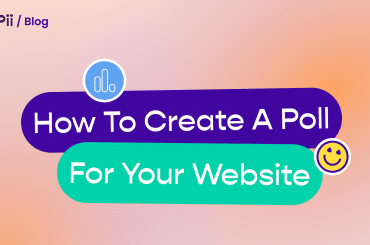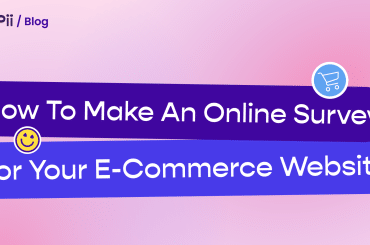Since you’re reading this article, I just wanted to congratulate you on launching your new product.
Now, you’re thinking about user feedback, right?
You want to know how will it be received, what are users looking for in it, what’s the next iteration is going to look like, right?
Well, what are you going to ask?
Getting a good survey created and sent out to your targeted customers can be a very valuable tool for making sure you have the right product on offer before going too far down the line with it.
But as important as this step is, getting some feedback from potential customers that you can trust is easier said than done.
You thought that you needed to only ask your customers? Then you’re leaving money on the table.
You need to think about potential customers as well, does this product really relate to them?
Let’s jump straight into the questions.
1- What are your thoughts on the initial cost of the product versus the expected value?
2- What is your biggest hesitation about buying this product?
3- Is there anything else we need to know about what you do or don’t like about it?
4- Are there any features that are must-haves in order for you to buy the product, or are there any features or benefits that make it unsuitable for your needs?
5- What do you like about the product and what could be changed to make it even better?
6- Is this something that others in your social circle or community might want as well? If yes, who specifically?
7- Do you feel like our competitors offer better products than we do and why or not? If so, what could we do differently to make it more appealing?
8- At first glance, which features of our new product stand out the most and why?
9- If not interested, why not?
Okay now, what?

Now you’ve asked your questions, what’s next?
Well, the answer isn’t to wait I’ll tell you that.
You need to monitor responses of course, but you need to be proactive.
What do I mean by proactive?
I mean you need to start seeing what goes on with your product rather than just seeing what people think of it.
Let’s do a little experiment.
Take a look at the questions you asked, were they all focused on the product rather than what people could do with it?
Did you ask any questions about why they might not want to use it or if there were other alternatives out there?
Doing this means that you’re still stuck in the past and focusing on getting your initial users.
You need to know who is going to adopt your product or service, how they are going to use it, what they will do with it, where they might fit into a bigger picture.
Once you have a clearer picture of where someone fits in your product pipeline you can start working out how best to monetize them.
Where does someone go from being a simple user or experimental user to being a buyer or an investor?
If you know where someone fits in the picture of your product, you can start seeing how they interact with others and what their behavior tells you about them.
Do they have any social presence that you could tap into for marketing purposes?
Do they have a large network that might need something from this product too?
Could they be a customer support representative down the line if it starts expanding more publicly?
You get the idea, asking questions is just one small part of the process.
What’s the key to knowing what people think?

The key is to go beyond what people think of your product and find out who will actually adopt it in anticipation of future monetization.
Imagine what you could do with this new knowledge?
Your targeted customers can be a very valuable tool for making sure you have the right product on offer before going too far down the line with it.
You thought that you needed to only ask your customers? Then you’re leaving money on the. You need to ask your prospects too.
So many people are stuck on the whole ‘asking questions’ part, it’s almost as if they have this fear of talking to their ideal customer without having any kind of product to sell them.
This is where you start building rapport, not by selling but by asking open-ended questions that need more than a yes or no answer.
You’re trying to find out what’s stopping them from buying the product you want to offer, why are they hesitating? Why haven’t they given in yet?
The most important thing is …

The important thing here is…don’t be pushy about it!
If your prospect doesn’t want to tell you what’s keeping them from buying right now, move on and ask another question instead.
The whole point of this is to make them comfortable with you and your product.
So, let’s take a step back and look at some areas where we could apply these simple rules before we move on.
First off, list out what you think would be the most important features of your product.
It doesn’t matter if they’re things that just came to mind or if they’re actually based on research and feedback from potential users, just write them down as quickly as you can.
Next up, think about how your target customer perceives those features and what value they place on them compared to the price it costs to use them.
Finally, ask yourself which ones stand out as being useful for solving their problems and maybe even coming across as being necessary, even if the customer hasn’t actually asked for them.
When you have a clear idea of how your customers are viewing your product, you can start thinking about how to turn it into something that feels more useful… even essential!
That’s when the fear of loss sets in and people stop hesitating.
If someone is on the fence about buying something or investing in it, they feel like they’re losing out on what makes it so appealing.
This feeling gets magnified even further when they’ve already told themselves that this is something they really need or want based on wanting to solve their problem at all costs!
Make sure you’ve got the right product, at the right time, and conveyed in the right way.
The key is to make sure people feel like staying on board will help them solve their problem… Even if it’s just by making them look good as they deal with their day-to-day struggles.
If this sounds like something that could work well for you or your business, don’t hesitate to reach out! That’s what we’re here for after all.
When it comes down to it, building rapport doesn’t have anything at all to do with what your product does. Instead, think about how you can actually relate to your target audience right off the bat.
It’s not just about getting them to talk about their problems, think of it more as finding common ground with someone who has a similar outlook on life.
Once you’ve got that down, you’re able to move on to things like making better connections and letting them know why they should feel good investing in what you have to offer!



